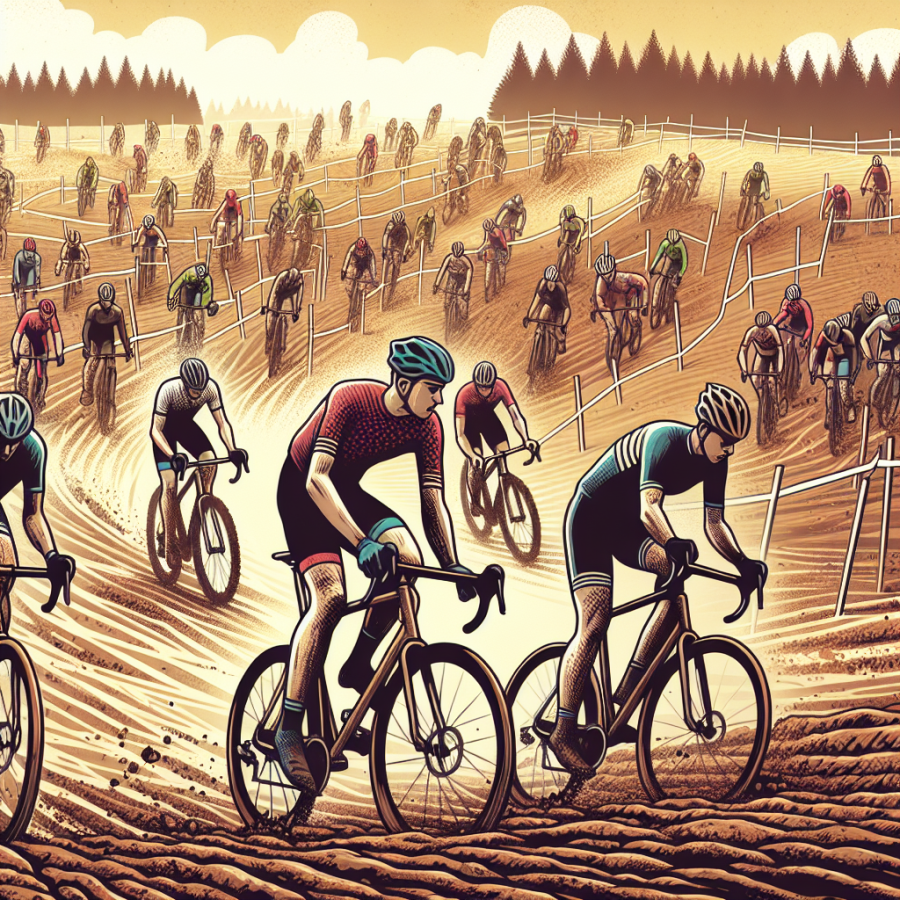Mastering the Art of Cyclo-cross: Techniques for Conquering Diverse Terrains
Cyclo-cross, the rugged cousin of road cycling, requires a unique blend of technical skill, physical stamina, and mental tenacity. Tackling diverse terrains such as mud, sand, and challenging landscapes is what sets this discipline apart. For those determined to master the art of cyclo-cross, understanding and perfecting certain techniques is essential.
**Navigating Mud: The Slippery Challenge**
Mud can be a common encounter in cyclo-cross races, ranging from a thin layer of slick moisture to deep, wheel-sucking bogs. To conquer muddy conditions, riders must adapt their approach both before and during the event. Pre-race bike preparation is crucial, with wider tire choices and lower tire pressures being favored to enhance grip and reduce clogging.
On the course, your handling skills will be put to the test as the bike slips and slides beneath you. Weight distribution is key; leaning back slightly can help maintain traction on the rear wheel. Consistent pedaling and a smooth rhythm will keep the bike moving forward, while sudden movements can lead to slips. Should you encounter deeper mud, running alongside your bike might be the most efficient way through.
**The Sands of Struggle**
Sand sections may not be as common as mud, but when present, they can be incredibly taxing on a cyclist's stamina and skill. Riding through sand requires a delicate balance of speed and control. Entering the sand at a higher speed can help carry momentum, but as the bike slows, you need to shift your weight back to keep the front wheel light and prevent it from digging in.
Anticipating the bike's response to the sand is vital. It will likely wander and require subtle steering adjustments. Whenever possible, follow ruts made by previous riders as they can offer the path of least resistance. If the sand is too deep or your bike becomes too difficult to handle, dismounting and running with the bike, a technique known as "shouldering," may be the fastest option.
**Building Stamina for Long Courses**
Cyclo-cross courses are designed to test riders' limits, and stamina plays a significant role in sustaining effort over multiple laps. Building stamina is a multifaceted approach that begins with structured training, including both aerobic endurance sessions and high-intensity interval work.
Fuelling strategy can't be overlooked. Consuming the right balance of carbohydrates and electrolytes before and during the race is crucial for maintaining energy levels.
Read also:
Varpa: The Traditional Finnish Skittles Game Explored
Building Endurance and Speed: Training Tips for Peak Cyclo-cross Performance
Developing peak cyclo-cross performance is a unique challenge due to the sport's high-intensity nature, varied terrain, and requirement for both endurance and speed. Success in cyclo-cross depends on expert bike handling skills, the ability to quickly dismount and remount, and the strength to power through tough sections of the course. To elevate your abilities in cyclo-cross, implementing specific training tips can provide a structured approach to improving both endurance and speed.
Seasonal Training Periodization: To condition your body effectively for cyclo-cross, divide your training year into periods focused on building base endurance, increasing intensity, and tapering for peak performance. During the offseason, concentrate on long, steady rides that develop aerobic capacity. As the season approaches, integrate high-intensity intervals to boost anaerobic fitness, mimicking race conditions.
High-Intensity Interval Workouts: Incorporating HIIT sessions into your routine is paramount for cyclo-cross. Cycle through short bursts of maximum effort, followed by brief periods of recovery. Workouts such as Tabata intervals or 30/30s - thirty seconds hard followed by thirty seconds of rest - can increase both your lactate threshold and VO2 max, directly translating to better race performance.
Running Integration: Cyclo-cross races often necessitate running with the bike, whether it's due to steep run-ups or barriers. To prepare, include running sessions in your training. This can be a combination of short sprints, hill repeats, and even longer, steady runs to build overall running endurance. To simulate race conditions, practice running while shouldering your bike, focusing on smooth transitions between cycling and running.
Technical Skills Practice: Mastering the technical skills of cyclo-cross can save precious seconds on every lap. Set up a practice course with tight turns, dismounts, remounts, and barriers to rehearse your technique. Aim to increase your agility and reduce the time of each transition, ensuring you're comfortable maneuvering in various conditions, whether it be deep mud, sand, or grass.
Strength and Plyometrics: Core strength is vital in cyclo-cross to maintain stability and control during the dynamic motions of a race. Incorporating planks, bridges, and other core exercises can enhance your stability on the bike. Plyometric training can also be beneficial, focusing on explosive movements like box jumps or squat jumps to improve the power you'll need for quick accelerations and conquering short, steep inclines.




